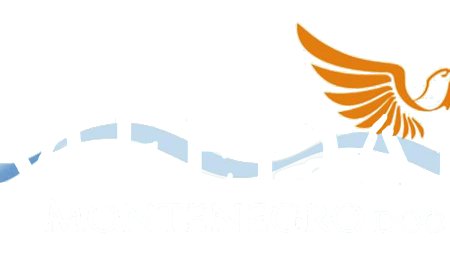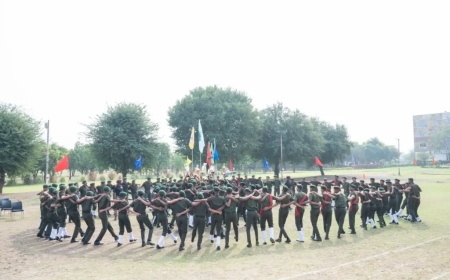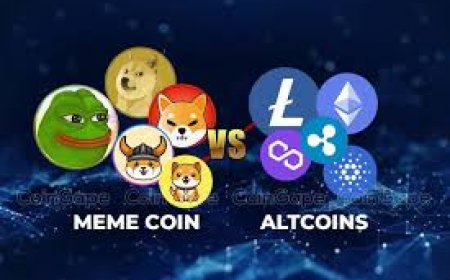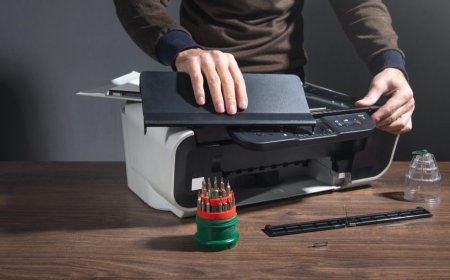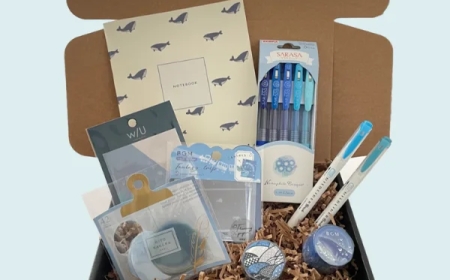How to Walk the Downtown Container Park on a Sunday in Las Vegas
How to Walk the Downtown Container Park on a Sunday in Las Vegas The Downtown Container Park in Las Vegas is more than just a collection of repurposed shipping containers—it’s a vibrant, open-air urban experience that blends art, food, music, and community into a uniquely Las Vegas format. Unlike the glitz of the Strip, this hidden gem offers a grounded, pedestrian-friendly escape where locals and
How to Walk the Downtown Container Park on a Sunday in Las Vegas
The Downtown Container Park in Las Vegas is more than just a collection of repurposed shipping containers—it’s a vibrant, open-air urban experience that blends art, food, music, and community into a uniquely Las Vegas format. Unlike the glitz of the Strip, this hidden gem offers a grounded, pedestrian-friendly escape where locals and visitors alike can stroll, shop, dine, and simply breathe in the creative energy of downtown. Walking the Container Park on a Sunday is particularly special: the pace slows, the sun casts golden light over the colorful structures, live music fills the air, and the atmosphere becomes intimate and relaxed. Mastering how to walk the Downtown Container Park on a Sunday isn’t just about navigating physical space—it’s about immersing yourself in a cultural rhythm that only this place, at this time, can offer.
For first-time visitors, the layout may seem deceptively simple—a cluster of bright containers, a few benches, a giant praying mantis sculpture. But beneath that playful exterior lies a carefully curated ecosystem of local vendors, rotating art installations, and community events designed to encourage slow, mindful exploration. This guide will walk you through every layer of the experience, from timing your arrival to understanding the hidden rhythms of the park, so you don’t just visit—you truly experience it.
Step-by-Step Guide
Walking the Downtown Container Park on a Sunday requires more than just showing up—it demands intention. Below is a detailed, hour-by-hour breakdown of how to maximize your visit, from arrival to departure.
Arrive Between 10:30 AM and 11:30 AM
Sunday mornings at the Container Park are quiet but awakening. Arriving between 10:30 and 11:30 gives you the ideal window to experience the park before the midday rush. You’ll find the parking lot relatively empty, and the staff are still setting up for the day—meaning you can observe the behind-the-scenes energy that keeps the park alive. There’s no need to rush; this is not a theme park with timed entry. The goal is to absorb the transition from sleepy downtown to lively community hub.
Use this time to walk the perimeter. Notice how the containers are arranged in a loose, organic pattern rather than a grid. Each cluster tells a story: the food vendors cluster near the center fountain, artisan stalls line the eastern wall, and the children’s play area is tucked discreetly behind the giant praying mantis sculpture. Take note of the materials—weathered metal, painted wood, reclaimed bricks. This is intentional design meant to reflect Las Vegas’s industrial past and creative rebirth.
Start at the Fountain and Work Counterclockwise
The central fountain, often surrounded by a small crowd of families and musicians, is the heart of the park. Stand near it for a moment and listen. On Sundays, you’re likely to hear acoustic guitar, jazz trumpet, or even a solo violinist. These performers are local artists selected through a community application process. Don’t rush past them—drop a few dollars in their case if you’re moved. It’s not just generosity; it’s part of sustaining the park’s culture.
From the fountain, begin walking counterclockwise. This path aligns with the natural flow of foot traffic and ensures you don’t miss any hidden gems. The first container you’ll encounter is often home to a local coffee roaster—try the cold brew with a hint of cardamom. It’s not on every menu, so ask. Then move to the adjacent container, where a ceramicist may be hand-throwing mugs on a wheel. Watch for a few minutes. Many artisans are happy to explain their process if you show genuine interest.
Explore the Art Installations with Purpose
The Container Park is a living gallery. Unlike traditional museums, the art here isn’t behind glass—it’s interactive, sometimes even climbable. The giant praying mantis is the most famous, but don’t overlook the smaller installations. Look for the mosaic mural on the north wall, painted by a local collective in 2021. It depicts the history of Las Vegas’s labor movement, from railroad workers to casino staff. The details are subtle: a worker’s lunch pail, a union button, a broken glass bottle. These aren’t decorative—they’re historical markers.
Use your phone’s camera to zoom in on textures. The paint on the murals is often layered, revealing older versions underneath. This is a sign of the park’s evolution. Take a photo, but don’t just snap and leave. Spend a minute reading the small plaque beside each piece. Many include QR codes that link to artist interviews or stories about the inspiration behind the work.
Sample Food Thoughtfully, Not Just Popularly
Food is a major draw, but most visitors head straight for the most Instagrammed vendor—the gourmet grilled cheese truck or the churro stand. Instead, use Sunday’s slower pace to discover the quieter gems. Look for the container labeled “Tacos de la Abuela.” It doesn’t have a sign, just a handwritten chalkboard. Ask the vendor what her grandmother used to make. She’ll likely offer you a sample of her birria taco with house-made tortillas. This is the kind of experience you won’t find on Yelp.
Another tip: avoid eating at the main seating area during peak hours (12:30–1:30 PM). Instead, find a bench under the shade of the palm trees near the western entrance. Eat slowly. Watch how people interact—parents reading to kids, couples sharing a single dessert, solo visitors journaling. This is the real social fabric of the park.
Visit the Small Retail Boutiques with Curiosity
The retail containers house a mix of local designers, vintage sellers, and indie brands. Don’t be fooled by the modest size—each is a carefully selected space. One container might sell only hand-painted denim jackets made from upcycled Levi’s. Another might offer small-batch herbal teas sourced from Nevada desert plants. Ask questions: “Where did you get this fabric?” “How did you learn to make this?”
Many vendors are the sole owners and operators. They’re not corporate reps. They’re artists, parents, retirees, immigrants—people who turned a passion into a livelihood. Your curiosity validates their work. If you buy something, thank them by name. It means more than you know.
Time Your Visit Around Live Music or Storytelling Events
Sundays often feature rotating performances. Between 2:00 PM and 4:00 PM, check the park’s bulletin board near the entrance for scheduled events. It might be a poetry slam by high school students, a storytelling circle hosted by a local historian, or a pop-up jazz trio. These events are free, unadvertised on social media, and often attended only by regulars. If you arrive during one, sit quietly. Don’t record unless asked. Be present.
If no event is listed, that’s okay. The ambient music from the street performers, the laughter of children, the clink of glassware from the cocktail bar—it’s all part of the soundtrack. Let it wash over you.
End Your Walk at the Sunset Bench
As the sun begins to dip behind the downtown skyline—usually around 5:30 PM on a Sunday—make your way to the westernmost bench. It’s unmarked, tucked between two containers, and often overlooked. This is the best vantage point to watch the light change over the city. The buildings glow amber, the park’s neon signs flicker on, and the air cools just enough to make you want to linger.
Bring a notebook or just sit with your thoughts. This is the quiet reward for walking slowly. You’ve moved through the park not as a tourist, but as a participant. You’ve seen the details, listened to the stories, tasted the authenticity. That’s what makes this walk meaningful.
Best Practices
Walking the Downtown Container Park on a Sunday isn’t just about where you go—it’s about how you move through the space. The following best practices ensure you honor the park’s ethos while maximizing your personal experience.
Walk, Don’t Rush
The Container Park is designed for walking—not scrolling, not snapping, not rushing. The paths are narrow. The seating is limited. The energy is communal. If you’re carrying a stroller, a large bag, or a camera on a tripod, you’re not just inconveniencing others—you’re missing the point. Walk with open hands and an open mind. Let the space dictate your pace.
Engage, Don’t Observe
Observation is passive. Engagement is active. Ask the vendor how they started. Ask the musician what song they’re playing and why. Ask the child painting on the sidewalk what their picture means. These interactions are the soul of the park. Most people are eager to share—if you meet them with kindness, not curiosity as a transaction.
Support Local, Not Just Popular
It’s tempting to buy from the vendor with the longest line or the flashiest sign. But the real value lies in the quieter stalls. A $10 hand-carved wooden spoon from a retired carpenter holds more cultural weight than a $25 mass-produced keychain. Your purchase isn’t just a transaction—it’s an investment in the local economy and creative ecosystem.
Respect the Space
There are no trash cans everywhere. Use the designated bins near the restrooms. Don’t leave wrappers on benches. Don’t climb on structures unless clearly marked as safe. The park is maintained by volunteers and a small staff. Your respect keeps it alive.
Leave Your Phone in Your Pocket
Yes, the park is photogenic. But the most memorable moments happen when you’re not looking through a screen. Put your phone away for at least 30 minutes. Watch how the light hits the metal containers at golden hour. Listen to the laughter of a family sharing ice cream. Notice the way the wind moves the flags above the food stalls. These are the details you’ll remember years later—not the photo.
Be Mindful of Noise Levels
The park is family-friendly. Loud music, shouting, or phone calls on speaker disrupt the atmosphere. If you’re talking on the phone, step outside the park boundaries. Keep conversations at a respectful volume. This isn’t a nightclub—it’s a sanctuary of creativity.
Arrive Early, Stay Late
The magic of Sunday at the Container Park unfolds in the margins. The first hour is calm. The last hour is golden. Avoid the midday rush (12:30–2:30 PM) when the crowds peak. Instead, arrive early and stay until dusk. You’ll see a completely different side of the park—one that’s peaceful, reflective, and deeply human.
Bring Water and Sun Protection
Las Vegas sun is unforgiving, even in spring and fall. Bring a refillable water bottle—there are water stations near the restrooms. Wear a hat. Use sunscreen. The park has no shaded areas beyond the trees and awnings, and you’ll be walking for over an hour. Hydration isn’t optional—it’s essential to enjoying the experience.
Check for Seasonal Events
Sundays can vary dramatically by season. In summer, there may be outdoor movie nights. In winter, there might be a holiday craft fair. Visit the official website or check the bulletin board upon arrival. Don’t assume the experience is the same every week. Flexibility is part of the practice.
Tools and Resources
While walking the Container Park requires no special equipment, having the right tools and resources enhances your experience and deepens your connection to the place.
Official Website: downtowncontainerpark.com
The official website is the most reliable source for weekly event schedules, vendor listings, and parking updates. Unlike third-party sites, it’s updated daily by the park’s operations team. Bookmark it before your visit. The “This Week” section lists Sunday performers, pop-up artists, and special happenings.
Google Maps Offline Download
Cell service in downtown Las Vegas can be spotty. Before you arrive, download the Container Park area in Google Maps offline mode. This ensures you can navigate without data. The park’s layout is simple, but having a visual reference helps you orient yourself if you get turned around.
Local Blog: LasVegasUnfiltered.com
This independent blog features in-depth profiles of Container Park vendors, interviews with artists, and behind-the-scenes stories. It’s not SEO-optimized, not corporate—it’s real. Read one article before your visit. It’ll give you context and names to look for. For example, you might learn that the ceramicist you meet is a former teacher who started making mugs after her husband passed away. That story changes how you see the mug you buy.
Sound Recording App (Optional)
If you’re a sound designer, writer, or simply someone who appreciates ambient noise, use a free app like “RecForge II” to record 30 seconds of the park’s soundscape. The clinking of glasses, distant traffic, children laughing, a saxophone riff—it’s a sonic time capsule. You can replay it later and remember not just what you saw, but what you heard.
Reusable Bag or Tote
Many vendors sell items that are fragile or bulky—a hand-blown glass ornament, a woven blanket, a ceramic bowl. Bring a reusable tote to carry your finds. It’s eco-friendly, practical, and aligns with the park’s sustainability ethos. You’ll also look like a thoughtful visitor, not a tourist.
Small Denominations of Cash
While most vendors accept cards, many prefer cash—especially the older artists and food sellers. Carry $20 in singles and fives. It makes tipping musicians, buying a $3 coffee, or donating to a child’s art project effortless. No one will ask for change—you’ll be the one offering it.
Comfortable, Closed-Toe Shoes
The ground is uneven in places. Some paths are gravel. Others are concrete with cracks. Sandals are fine for the sun, but for walking, wear supportive shoes. You’ll be on your feet for 90 minutes to two hours. Your feet will thank you.
Journal or Sketchbook
Bring something to write or draw in. You don’t need to be an artist. Just jot down one thing you saw that surprised you. One thing you smelled. One person you made eye contact with. These fragments become memories. And memories are the only souvenirs that last.
Real Examples
Real experiences reveal the true character of a place. Below are three detailed accounts from visitors who walked the Downtown Container Park on a Sunday—and how their approach shaped their outcome.
Example 1: Maria, 68, Retired Teacher from Arizona
Maria arrived at 10:45 AM with a small notebook and a thermos of tea. She didn’t buy anything. She sat on the bench near the mosaic mural and watched the artists work. At 1:00 PM, a young man named Javier, who was painting a mural on a container, noticed her sketching. He asked if she was an artist. She said no—just someone who liked to watch. He invited her to help paint a small section. She painted a single bluebird. He signed it with her initials. She left with a photo of the mural and a new friend. “I didn’t come for souvenirs,” she told me later. “I came to feel useful.”
Example 2: Jamal, 24, College Student from Chicago
Jamal came with his phone out the whole time. He took 87 photos, posted 12 to Instagram, and bought a $15 T-shirt because it had a cool design. He left at 2:00 PM, saying, “It’s cute, but not worth the drive.” A month later, he found himself thinking about the jazz musician who played “My Funny Valentine” on a saxophone. He went back. This time, he sat down. He asked the musician his name. He learned the man was a Vietnam vet who played for free every Sunday to honor his fallen squad. Jamal bought a CD. He didn’t post it. He just listened. “I thought I was there to consume,” he wrote in his journal. “I was there to be listened to.”
Example 3: Elena and Leo, 8 and 10, from Henderson
Their parents brought them on a Sunday afternoon. They were given $10 each and told to spend it however they wanted. Elena bought a $3 bracelet made of recycled bottle caps. Leo bought a $7 wooden train from a man who carved it himself. They didn’t ask for more. They sat on the grass and played with the train, pretending it was traveling to the moon. A woman nearby offered them lemonade. They drank it slowly. Their mother said, “I didn’t think they’d stay this long.” But they did. For two hours. “They didn’t need screens,” she said. “They needed space.”
These stories aren’t anomalies. They’re the norm for those who walk slowly, listen deeply, and engage authentically. The Container Park doesn’t reward the loudest or the fastest. It rewards the present.
FAQs
Is the Downtown Container Park open on Sundays?
Yes. The Container Park is open every Sunday from 10:00 AM to 8:00 PM. Some vendors may close earlier, especially during colder months, but the core areas remain accessible throughout the day.
Do I need to pay to enter the Container Park?
No. Entry is completely free. There are no admission fees, parking fees (within the public lot), or entry tickets. You pay only for what you choose to buy or experience.
Is the Container Park kid-friendly?
Extremely. There’s a dedicated play area with climbing structures made from recycled materials, a sandbox, and frequent family-oriented events. The space is designed for all ages, and most vendors welcome children with open arms.
Can I bring my dog?
Yes, leashed dogs are welcome. There are water bowls near the restrooms, and many visitors bring their pets. Just be respectful of others and clean up after your dog.
Are there restrooms available?
Yes. Clean, accessible restrooms are located near the main entrance and the food court area. They are maintained daily and stocked with supplies.
Is parking free?
Yes. The public parking lot adjacent to the park is free for up to three hours. After that, standard downtown parking rates apply. Street parking is also available nearby, but spaces fill quickly on weekends.
What if it rains?
The Container Park is outdoors and open rain or shine. Most vendors have awnings or canopies. The park rarely closes due to weather, but check the official website for alerts. Light rain can make the experience even more magical—the scent of wet concrete, the sound of droplets on metal, the quiet hush of fewer people.
Are there seating areas?
Yes. There are benches, picnic tables, and even grassy patches. Many people bring blankets and sit under the palm trees. Seating is first-come, first-served.
Can I host a private event at the Container Park?
Yes, but only through a formal application process. The park hosts community events, art shows, and weddings by permit. Contact the management team via the official website for details.
What’s the best time to visit for photos?
Golden hour—approximately 30 minutes before sunset—is ideal. The light is soft, the colors pop, and the crowds thin. The praying mantis sculpture glows beautifully in late afternoon light.
Conclusion
Walking the Downtown Container Park on a Sunday in Las Vegas is not a tourist activity. It’s a ritual. It’s an invitation to slow down in a city built on speed. To listen in a world that shouts. To connect in a culture that often isolates. This guide has shown you how to move through the space—not just physically, but emotionally and spiritually.
You don’t need to buy anything. You don’t need to post anything. You don’t need to prove you were there. All you need is presence. A willingness to notice the details: the way the wind catches the flags, the laughter of a child who just discovered a new flavor of ice cream, the quiet pride in a vendor’s eyes when you say “thank you.”
Las Vegas is often reduced to its neon lights and casinos. But beneath the surface, in places like the Container Park, a different kind of magic thrives—one built not on spectacle, but on sincerity. On Sunday mornings, when the sun is low and the air is still, you can feel it. You can walk through it. And if you do it right, it will walk through you.
So go. Arrive early. Walk slowly. Listen more than you speak. Leave with less, but carry more.
The Container Park doesn’t just welcome you. It remembers you.







